By Justine Vaz and Narumol Aphinives (editors), with almost 50 contributors from Malaysia, Thailand, Indonesia, Japan and the Philippines
50 Best Malaysian Titles for International Rights 2015
ACROSS ASIA, people are coming to terms with the impacts of globalization and its accompanying social, economic, and environmental transformations. This compelling study examines biocultural diversity – the ways different communities interact with their surroundings, drawing upon local knowledge, shared values, and cultural heritage as they negotiate change. In an ambitious and pathbreaking regional research project, some of Asia’s leading public intellectuals visited five communities – Kali Code (Indonesia), Tasik Chini (Malaysia), Biwako (Japan), Batanes (The Philippines) and Khiriwong (Thailand) – in order to better understand local responses to contemporary challenges. Through analytical essays, personal reflections, poetry, music and dance – and beautifully illustrated throughout by powerful images – Living Landscapes, Connected Communities encourages us to broaden our understandings of people’s changing relationship with nature to encompass essential elements of spirituality, identity, belonging, and wellbeing. With all their complexity and creativity, each of these communities has something meaningful to convey about the human-environment connection and the common threads linking people across the region. Taken together, these stories of resilience, perseverance, and collective action provides a timely and relevant counterpoint to fatalistic views of environmental degradation. Living Landscapes, Connected Communities will appeal to a broad audience – to everyone interested in the dynamic relations between society, culture, environment, and change in modern Asia.
About the Editors
Justine Vaz is an independent researcher based in Malaysia, with extensive experience as a conservation practitioner and environmental consultant, specifically focusing on forest-dependent communities, indigenous knowledge, resource management, and customary tenure. She holds a degree in geographical and environmental studies from the University of Adelaide, Australia. She has recently completed a review of indigenous and community-conserved areas in Sabah, Malaysia; contributed to drafting a new state strategy for biodiversity conservation; and is involved in developing a plan for community management of an urban forest reserve in partnership with the local forestry authority. She has published on nature, conservation, and contemporary land use issues.
Narumol Aphinives is a consultant specializing in environmental education and sustainable development projects. She has been involved in designing and implementing numerous initiatives in Southeast Asia over the past 20 years. She was an editor and a writer for Creating Environmental Education for Sustainable Development in Schools, commissioned by the Ministry of Natural Resources and Environment in Thailand, and was also a consultant for the accompanying training program. She was previously the executive director of Amnesty International Thailand, a member of the board of directors and general manager of the Green World Foundation, as well as a journalist.
Editorial review(s)
Living Landscapes, Connected Communities is an ambitious regional project featuring almost 50 contributors from five countries… It examines biocultural diversity – the way different communities in different countries interact with their surroundings, drawing upon shared values and cultural heritage, as they negotiate an ever-changing world. Rouwen Lin, The Star
Its findings point to our common Asian heritage of spirituality, community solidarity and moral leadership. Despite belonging to different national contexts, there is unity in the rich variety of Asian cultures. The more than 300-page book is a culmination of a five-year study by hundreds of fellows of the Asian Public Intellectuals Programme. Together, these “cultural commuters” have taken the initial step to liberate ourselves from cultural myopia, by understanding the interconnectedness of Asian legacies and values. More needs to be done surely to piece together the jigsaw of alternative development and ecological change in Asia.
I recommend this resource to teachers who are looking for case studies that are interesting and will further their students’ understanding of Australia’s neighbours. Case studies could be used in a diverse range of topics including depopulation and/or ageing populations; community management and protection of the environment; conservation and sustainability; disasters; and nurturing local cultures and communities. Sharon Jones, Kew East, Victoria, Geographical Education, Volume 29, 2016
Table of Contents
List of Maps, Figures, Tables, and Musical Notations
List of Abbreviations and Acronyms
List of Contributors
List of Photographic Credits
Foreword by Tatsuya Tanami
Preface
Acknowledgements
Introduction
From the Mountains to the Sea: Making Connections Across the Region
Dicky Sofjan
I Khiriwong, Thailand
The Enduring Spirit of Khiriwong
Community Governance and Management of Natural Resources
Thirawuth Senakham and Supa Yaimuang
Belief, Local Wisdom, Nature, and Community Life
Kokaew Wongphan
Community Initiatives Toward Sustainable Livelihoods
Cristina P. Lim
Commemoration Rituals and Cultural Continuity in Khiriwong
Darunee Tantiwiramanond
Khiriwong Beliefs and Practices in a Changing World
Theeraphan Chulakarn
Revisiting the Memory of a Disaster: The Water Children Project
Takako Iwasawa
II Biwako, Japan
Revitalizing Rural Landscapes
Learning from the Mountain Communities of Biwako
Fumio Nagai, Motoko Kawano, Motoko Shimagami and Wataru Fujita
The Soundscapes of Mukugawa
Motohide Taguchi
The Satoyama Landscapes as a Social-Ecological System: Insights from Harihata and Mukugawa
Ayame Suzuki
People, Mountain Forests, and Governance in Harihata
Myfel Joseph D. Paluga
The Padi Field as a Learning Space
Motoko Shimagami
Reliving Community Memories with Virtual Landscapes
Toshiya Takahama
III Kali Code, Indonesia
A River of Dreams
Realizing a Vision for Urban Revitalization in Kali Code
Widodo Brontowiyono and Ribut Lupiyanto
Pemerti Kali Code: Grassroots Initiatives for an Alternative Environmental Future
Totok Pratopo
Belief, Nature, and Society in a Sacred Landscape
Kamaruzzaman Bustamam-Ahmad
A New Collective Identity for the Urban Community of Kali Code
Dwi Any Marsiyanti
Code Purnama Hatiku (Code, the Full Moon of my Heart): In Search of Home Through Music
Tomoko Momiyama
Spirit of Kali Code: Collaboration of Dance, Music, Folk Theater, and Wayang Painting
Michi Tomioka
IV Tasik Chini, Malaysia
An Ecosystem Under Pressure
Tasik Chini: A Wetland Wonderland
Kam Suan Pheng
Sajak Chini / Poems from Chini
Muhammad Haji Salleh
The Story of How the Lake was Created
Simoi bt Seng and Abas bin Leman
Impacts on Life and Livelihood: Environmental Change through the Eyes of the Community
Penchom Saetang and Karnt Thassanaphak
Pantun Tasik Chini / Lake Chini Pantun
Noorhayati Abdullah
The Lake, the Weir, and a Tragic Tale of Unintended Consequences
Henry Chan, Adnan A. Hezri and Justine Vaz
An Encounter with a Traditional Healer
Michi Tomioka
From Blowpipes to Biosfera: Observations on Culture and Change
Jose Estuar
Jungle Trekking at Tasik Chini
Zawiah Yahya
Confronting the Crisis, Facing the Future
Kam Suan Pheng, Henry Chan, Adnan A. Hezri and Justine Vaz
V Batanes, The Philippines
Spirituality and Sustainability in a Sacred Place
Traditional Summer Fishing in Batanes
Sirirat Katanchaleekul and Henry Chan
Sacred versus the Secular: The Decline of Mataw Fishing?
Dave Lumenta
Seasonal Ritual and the Regulation of Fishing
Maria F. Mangahas
Tradition Reimagined: Local Government Influences in Mataw Fishing and their Implications for Sustainability
Rosalie Arcala Hall
Women’s Lives in Diura, Mahatao
Cristina P. Lim
Moved by the Island: Dancing in Sabtang
Joyce Lim Suan Li
A Traditional Laji Song
Motohide Taguchi
Maywang a Libro Du Vatan, or “The Blank Book Archives Project” by the Artist, Jay Ticar
Rosalie Arcala Hall
VI Rethinking Human–Ecological Balance
Innovative Practices for Safeguarding Cultural Landscapes in Asia: Watershed Villages in Japan and Thailand
Wimonrart Issarathumnoon
The Rights of Indigenous People and Environmental Governance in Peninsular Malaysia
Yonariza and Justine Vaz
Using Local Knowledge for Disaster Risk Reduction: Experiences from Thailand and Indonesia
Ekoningtyas Margu Wardani and Justine Vaz
Collaborative Disaster Risk Management in Kali Code
Trias Aditya
Asian Ecology and Knowledge of the Sacred: Communal Rituals, Cultural Meaning, and Community Inventiveness
Dicky Sofjan
Traditional Music as a Medium of Collective Memories: Cases from Batanes and Biwako
Motohide Taguchi
A Question of Balance? Non-Linear Change, Ecology, and Governance
Adnan A. Hezri
The Challenges of Building a Community: A Reflection
Danilo Francisco M. Reyes and Yeoh Seng Guan
The Force of Interconnectedness
Sombath Somphone
Conclusion
Ecologies of Hope Across Contemporary Asia
Justine Vaz
Glossary of terms
Index


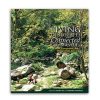
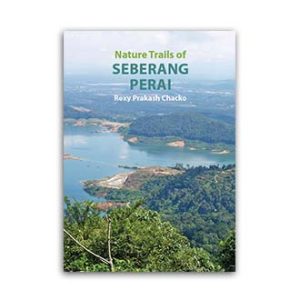
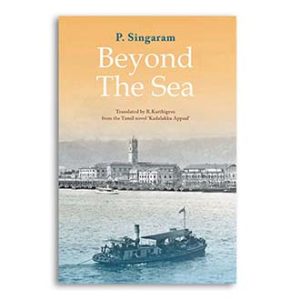
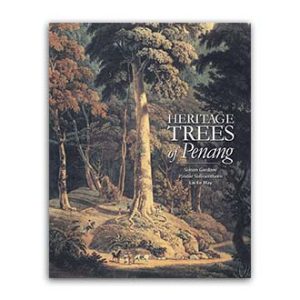


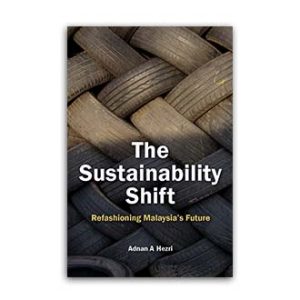
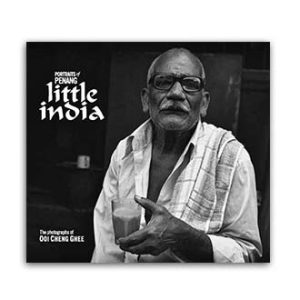
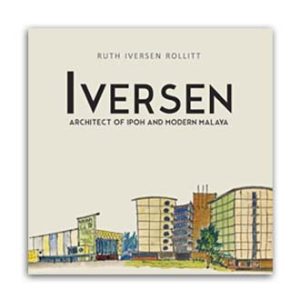
Reviews
There are no reviews yet.